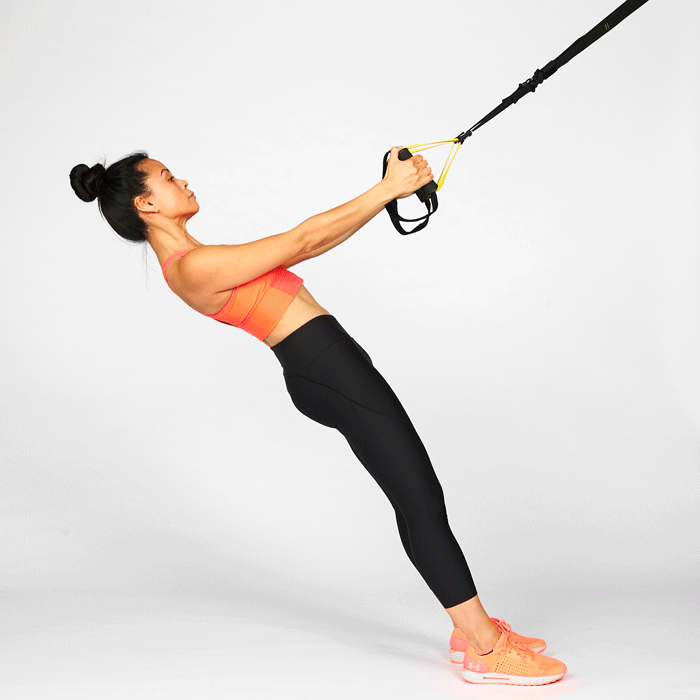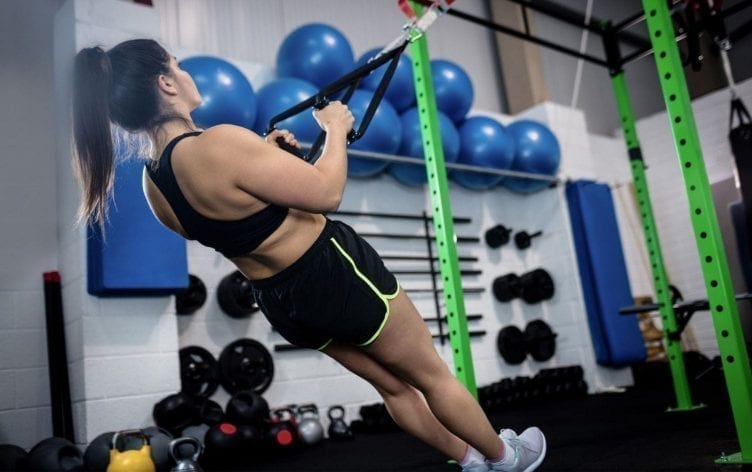Few of us have hours to spend lifting weights every day. So when we do strength-train, we need to use that time as wisely as possible, which is why compound exercises are gaining popularity. What will get you stronger and faster?Compound exercises.
Unfortunately, many people still train their body like it’s a collection of loosely-connected parts. They choose exercises that hit specific muscle groups, knocking out sets of biceps curls, lateral raises and seated leg extensions in hopes of reaping maximum benefits. But while this approach may help you get stronger, it’s not a fast-track to your goals.
WHAT ARE COMPOUND EXERCISES?
“Compound exercises are multi-joint movements that stimulate several muscle groups at one time,” saysSimon King, personal trainer and owner of Cre8 Fitness in London, England. Think:pushups,deadlifts,bench pressesandsquats.
In the squat, for example, your hips, knees and ankle joints move simultaneously, “making this a thoroughly multi-joint movement,” King says. Meanwhile, rows and pullups involve your back, shoulders, biceps and forearms. Pushups and chest presses work your chest, shoulders, and triceps.
Compound exercises differ from isolation exercises, which involve a single joint and stimulate one muscle group. A few examples include biceps curls, triceps extensions, lateral raises, front raises, leg extensions, and hamstring curls.
Isolation exercises can be a great way to add volume and focus to a muscle group you think could use extra attention. For example, if you’re adding size to your biceps or trying to improve your pullups, tacking on a few sets of biceps curls to your workout could help.
However, compound exercises should form the base of your strength routine. Compound exercises treat your body like the complex system of interconnected muscles, joints and nerves it really is. Why do triceps extensions when you can hit your triceps and a lot more with chest presses?
BENEFITS OF COMPOUND EXERCISES
Here are just a handful of the perks you can expect from compound exercises.
GREATER STRENGTH
The more muscles and joints you have to help you complete a movement, the more weight you can lift. The more you practice the exercise, the more you’ll be able to lift over time. This process of gradually increasing weight helps your body adapt and get stronger, faster, King says.
MORE EFFICIENCY
If you want to get more bang for your buck, choose compound exercises. “These exercises work several muscle groups at one time, which is perfect for a busy schedule or if you simply want to fit more into your training sessions,” King says.
BIGGER CALORIE BURN
Exercises that use more muscle tissue also eat up more oxygen, which helps you burn more calories overall. Just knock out a set of walking lunges and see how quickly you get short of breath. Because you’re moving through space and using multiple muscles and joints, compound exercises like walking lunges burn more calories than, for example, isolation exercises like lying-down hamstring curls, King says.
ADDED FUNCTIONALITY
Multi-joint, multi-muscle exercises typically mimic everyday movements better than single-joint, single-muscle exercises.
Deadlifts, for example, mimic the motion of picking heavy objects (i.e., boxes, grocery bags, furniture) off the floor. Squats replicate the motion of getting up and down from a seated position. And doing a pushup is like pushing yourself up from the floor.
MORE PERFORMANCE IMPROVEMENTS
Compound exercises — especially those that reproduce everyday movements — help improve your coordination, balance and reaction time. These are all vital for improving athletic performance or simply lifting heavier, King says.
5 COMPOUND EXERCISES TO TRY
Looking for inspiration? Incorporate some of King’s favorite compound exercises into your workouts. Or, string these five moves together to create an effective, full-body routine. Do 3–5 sets of 3–8 reps per move.
HAND-RELEASE PUSHUPS

Get into a pushup position on the floor: Hands under your shoulders, slightly wider than your ribcage. Brace your core as you lower your body to the floor with control, making sure your elbows flare out no more than 45 degrees. Once you’re in the bottom position, lift your hands off the floor and squeeze your shoulder blades together. Place your hands back on the floor and push up. Do pushups from your knees if you can’t do regular pushups.
DUMBBELL FRONT SQUATS

双脚双脚与臀部同宽,站高a pair of dumbbells in front of your shoulders. Keeping your chest tall, push your butt back to sit down as far as you’re comfortably able. Make sure your knees stay in line with your toes and elbows pointed straight ahead. Push into the floor to stand up.
REAR-FOOT RAISED STATIC LUNGES

Stand facing away from a low box or step, holding a pair of dumbbells down at your sides. Reach one foot back and rest the top of your foot on the bench. Bend your front knee to lower your hips toward the floor as far as you can with control. Keep your chest up and your front knee in line with your front foot. Push into the floor to stand up.
ROMANIAN DEADLIFTS

Stand tall with your feet hip-width apart, holding a pair of dumbbells in front of your thighs. Push your hips back and hinge forward at the waist to lower the weights toward the floor. Stop when you feel a slight tug in your hamstrings and reverse the movement. Keep your core tight and your back flat the entire time.
SUSPENSION TRAINER ROWS

Stand facing the suspension anchor. Grip one handle in each hand and lean back, so your arms are straight. Your body should form a straight line from top to bottom. To initiate the movement, squeeze your shoulder blades together and keep your elbows tight against your sides as you pull yourself up. Reverse the movement to straighten your arms with control. To make the exercise easier, step your feet further from the anchor point.
THE BOTTOM LINE
Isolation exercises are great, but compound exercises offer more bang-for-your-buck. Not only should they form the foundation of your exercise program, but you should do them consistently for maximum strength and performance benefits. “Isolation exercises just don’t have the same carryover effect when it comes to running faster, lifting more or packing on muscle,” King says.
Check out“Workout Routines”in the MyFitnessPal app to discover and log workouts or build your own with exercises that fit your goals.

